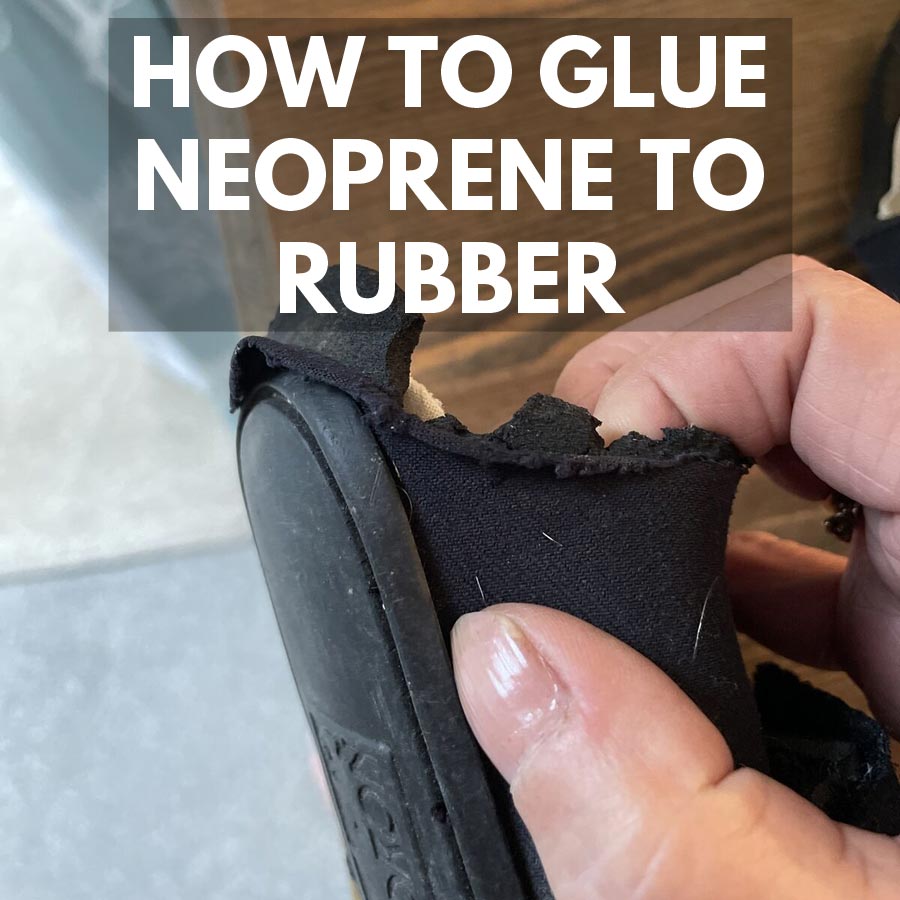
How to Glue Neoprene to Rubber
The best adhesives to glue neoprene to rubber include superglue, contact cement, and neoprene rubber contact adhesive. Each of these adhesives is suitable for long-term adhesion, but only one of these is best for being flexible. The best glue for rubber isn’t necessarily the right choice for neoprene which is just as awkward to work with.
When the time crunch is essential for fast adhesion, these adhesives are perfect for short working times. It’s best to understand why selecting the right adhesive will determine which is better for the final product’s conditions.
Some preparations will be needed to adhere to each of these adhesives to adhere correctly. Only one of these adhesives will work better. However, two of these adhesives are budget-friendly for most hobby enthusiasts.
What Glue Can You Use for Neoprene to Rubber?
The type of glue you need for neoprene and rubber should be flexible with a high grab. Here are three adhesives we would recommend:
Neoprene Rubber Contact Adhesive
Neoprene rubber contact adhesive is solvent-based for gluing porous neoprene rubber pieces to neoprene products or natural rubber products together. It creates a permanent bond that is flexible enough to use for wetsuits and other neoprene products intended to be submerged in water. There is little preparation when this adhesive is used, and curing times are similar to contact cement.
Like any other contact cement, Neoprene rubber contact cement is a fast bonding contact cement that will not need any special bonding. Examples are 3M High-Performance Rubber and gasket adhesive and Herco Neoprene Rubber Contact Adhesive as seen in the image above.
Contact Cement
Contact cement is another choice that is fine for gluing neoprene to rubber. The application time is the same as Neoprene rubber adhesive except that contact cement must be applied to neoprene and rubber items and allowed to dry. The resulting contact between these two items will create a bond that creates permanent adhesion between them. While contact cement is somewhat flexible, this glue functions better when there is little flexing.
Contact cement is also the least expensive of the adhesives used here, making this adhesive an affordable and fast solution for adhering neoprene to rubber.
Super Glue
Super glue is an instant cure pressure-sensitive adhesive that will secure neoprene to rubber. The bond will be instant and is another low-cost alternative for gluing these two surfaces together. A good choice for this application can be from small glue bottles from Loctite or larger hobby glues such as CA Glue. This is the only glue that can be dissolved if the adhesion is not perfect and uses acetone to loosen the bond.
Super glue is fine for small pieces, but it is best to work in folded-up sections when gluing larger pieces. This will allow a large piece to be glued down starting from one end that is glued down initially, similar to a flap.

How to Prepare Neoprene to Rubber Before Gluing
Little preparation needs to take place before these two are glued together. Rubber and neoprene need to be free from dirt or dust and only need an alcohol wipe to prep the surface. Using a hairdryer to warm each side to burn off any remaining alcohol won’t hurt. There is no need to use sandpaper since the adhesives used for these two materials don’t need a rough texture.
Be sure to wear rubber gloves to keep the adhesive off your hands and fingers. In addition, it won’t hurt to use safety goggles to prevent adhesive (especially Super Glue) from splashing into the eyes.
How to Apply Glue for Neoprene to Rubber
A paintbrush is the best application tool to apply neoprene rubber adhesive and contact cement. Most contact cement jars come with a built-in brush, but this might not be large enough for bigger jobs. Neoprene rubber adhesive and contact cement need to be applied separately to the neoprene and rubber. When each of these pieces has dried to the touch, they are pressed firmly together to create a bond.
Because Super Glue has some fumes involved, it is better to work in a room with adequate ventilation to avoid being overcome by the smell of super glue.
How to Cure Neoprene to Rubber Glue
Neoprene adhesive and contact adhesive are allowed to dry to the touch before they are bonded together, but a post-cure is advised for at least 5 hours. Super glue is instantly cured with pressure, so there is little need to post-cure. To get the best results, super glue should be allowed to sit for 2 to 3 hours for a stronger cure. Contact Cement and neoprene adhesive can be laced into a warm area to complete curing with no clamping required.
Since contact cement and neoprene adhesive have solvents involved in their mixture, a well-ventilated room is better to reduce solvent inhalation.
Which Is the Best Glue to Use?
The cheapest solutions for gluing neoprene to rubber are super glue and contact cement. These adhesives are good for long-term adhesion but not the best for high flexing of glued parts. Neoprene adhesive is the best solution for achieving flexible parts that are bonded permanently. Neoprene adhesive will be pricier in that respect but is worth the extra money spent for long-term performance.










